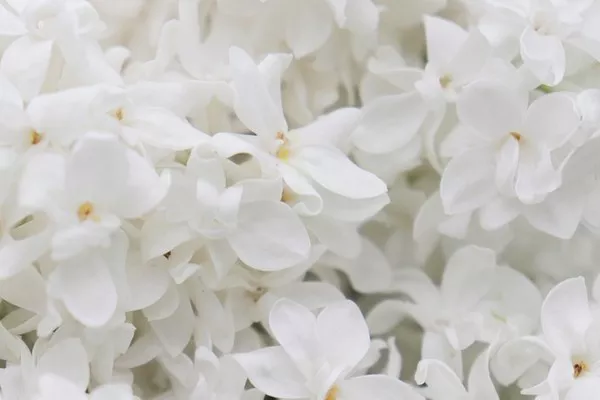White flowers possess a timeless elegance and ethereal beauty that captivates the senses. They have an allure that transcends cultural boundaries, making them cherished in various contexts, from weddings to funerals and everything in between. In this article, we delve into the fascinating world of white flowers, exploring their symbolism, different types, and the awe-inspiring wonders they offer. From delicate lilies to pristine roses, these blooms have an undeniable charm that has been celebrated throughout history. Join us on a journey through the petals of enchantment as we unravel the secrets of white flowers.
1. The Symbolism of White Flowers
White flowers have long been associated with purity, innocence, and spirituality. Their pristine color represents a blank canvas or a fresh start. They symbolize new beginnings, clarity, and untarnished intentions. In many cultures, white flowers are used during rituals, ceremonies, and religious events to signify spiritual purity and divinity. From wedding bouquets to baptismal decorations, the presence of white flowers adds a touch of grace and sanctity.
2. Types of White Flowers
A. Roses: Known as the epitome of love and romance, white roses convey purity, innocence, and loyalty. Varieties like the Hybrid Tea ‘Iceberg’ or the English Rose ‘Claire Austin’ exhibit stunning white hues and intoxicating fragrances.
B. Lilies: With their majestic presence and captivating fragrance, white lilies evoke a sense of serenity and peace. The Easter Lily (Lilium longiflorum) and the Casa Blanca Lily (Lilium ‘Casa Blanca’) are prominent examples of white lilies with their trumpet-shaped blossoms and impressive stature.
C. Orchids: White orchids represent elegance, beauty, and luxury. These exotic blooms can be found in various species, such as Phalaenopsis, Cymbidiums, or Dendrobiums. Their intricate designs and pristine white shades make them highly sought-after among collectors and floral enthusiasts.
D. Daisies: Simple yet charming, white daisies symbolize innocence, purity, and loyalty. The Shasta Daisy (Leucanthemum x superbum) and the Oxeye Daisy (Leucanthemum vulgare) are popular varieties with their classic white petals and golden centers.
E. Tulips: White tulips signify forgiveness, new beginnings, and purity of intentions. Varieties like the ‘White Triumphator’ or the ‘White Prince’ boast exquisite white hues that radiate elegance and grace.
F. Hydrangeas: These voluminous blooms come in a range of colors, including beautiful white variations. White hydrangeas embody sincerity, grace, and abundance. Notable examples include the ‘Annabelle’ hydrangea (Hydrangea arborescens ‘Annabelle’) and the ‘Limelight’ hydrangea (Hydrangea paniculata ‘Limelight’).
3. Botanical Marvels of White Flowers
White flowers showcase incredible adaptations and fascinating botanical features. Some species exhibit night-blooming tendencies, allowing them to attract pollinators like moths and bats. Notably, the Selenicereus grandiflorus, also known as the Night-blooming Cactus or Queen of the Night, produces stunning white blossoms that open only after sundown.
Additionally, white flowers often rely on fragrance and nectar production to entice specific pollinators, such as bees and butterflies, ensuring their propagation and survival. The creamy-white Magnolia blossoms, for example, emit an enticing scent that attracts beetles for pollination.
White flowers also possess unique adaptations to harsh environments. Take, for instance, the Edelweiss (Leontopodium alpinum), a mountain-dwelling perennial with fuzzy white petals that protect it from extreme cold and ultraviolet radiation.
What is a rare white flower?
A rare white flower refers to a flower species that is uncommon and distinguished by its predominantly white or pale-colored petals. There are several types of rare white flowers found across the world, and here are a few examples:
Ghost Orchid (Dendrophylax lindenii): This highly elusive orchid is renowned for its stunning white appearance and ghostly appearance. It’s found in the wetlands of Florida, Cuba, and the Bahamas.
Corpse Lily (Rafflesia arnoldii): Although not entirely white, the inner part of this gigantic flower is pale and has a peculiar odor resembling rotting flesh. It’s one of the world’s largest flowers and can be found in Southeast Asia.
White Jade Flower (Jasminum polyanthum): This fragrant climbing vine produces clusters of delicate, white, star-shaped flowers. It’s native to China and is often cultivated as an ornamental plant.
Himalayan Blue Poppy (Meconopsis betonicifolia): Despite its name, the variety “Alba” exhibits pure white blossoms instead of blue. It’s a rare and striking flower found in the higher altitudes of the Himalayas.
Moonflower (Ipomoea alba): A nocturnal beauty, the moonflower unfurls its large, white blooms under the cover of darkness. It’s a type of morning glory vine commonly found in tropical and subtropical regions.
These are just a few examples of rare white flowers, but there are many more fascinating and unique species waiting to be discovered around the world.
Conclusion
From their symbolic significance to their diverse types and botanical marvels, white flowers continue to captivate and inspire us. Whether gracing wedding ceremonies, adorning gardens, or offering comfort during somber occasions, these blossoms evoke emotions and leave an indelible mark on our lives. Their purity, elegance, and timeless beauty make them cherished and revered throughout different cultures and generations. So, the next time you encounter a white flower, take a moment to appreciate its splendor and the stories it silently tells through its delicate petals.


